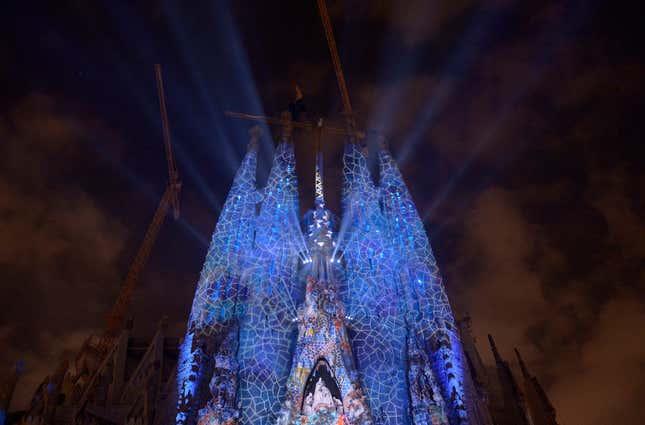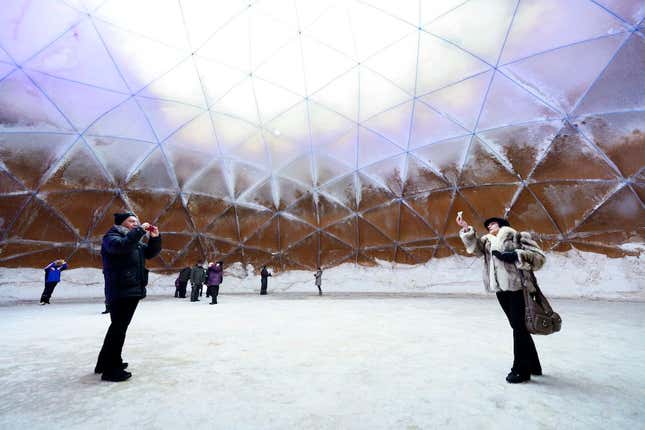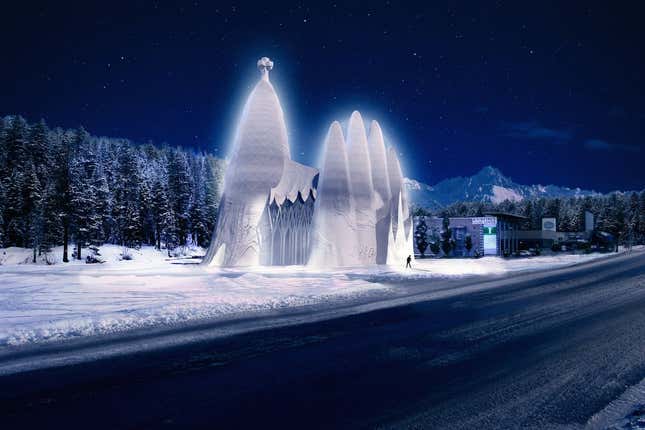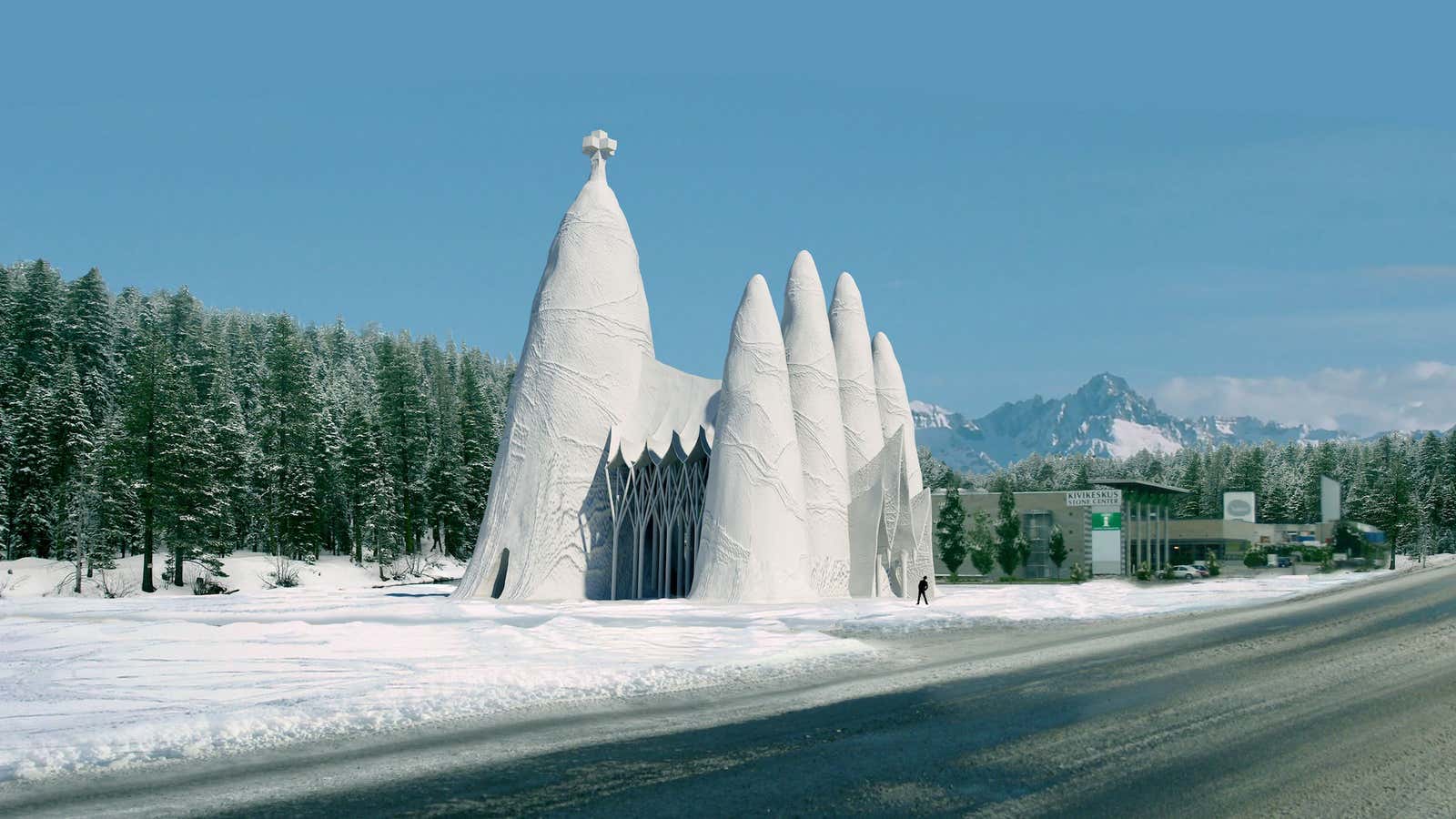The Catalan architect Antoni Gaudí would have turned 162 last week, but his peculiar Gothic surrealism is once again contemporary, seen in the creeping organic forms of today’s computer-assisted starchitects. The Sagrada Familia church in Barcelona was his masterpiece, even though it was less than a quarter finished when he was struck and killed by a tram in 1926. Current plans to complete it set the end date at 2026 or 2028, depending on whom you ask.
A group of students at the Eindhoven University of Technology are trying to build a new, temporary version of the monumental church well before then, but with some notable differences. At just over 123 feet tall, their Sagrada Familia will be a 1:4 model of the original. It will be erected on a site in Finland, almost 2,000 miles north of Barcelona. It will take them three weeks to build it this winter, rather than a century. And instead of stone, it will be constructed out of ice.

Or, to be specific, it will be made from Pykrete—a super-strong mix of ice and wood pulp that was briefly considered by the Allies as a building block for ships during World War II, when steel reserves were low. The mixture is as strong as concrete, bulletproof, and melts very slowly.
Those properties make it an interesting building material in a place like Juuka, Finland, where winter temperatures range from -22° to 5° Fahrenheit. Juuka is where, last year, another group of Eindhoven students built what was then the world’s largest ice dome. They used the same method that the team of Gaudí acolytes will try in December: spraying thin layers of snow and pykrete on top of inflatable molds, then removing the balloons from under the ice.

The biggest challenge facing the team could be climate change. Construction on last year’s ice dome was delayed by an unusually warm December. The team will be in trouble if mild temperatures prevail again this winter, according to Arno Pronk, the Eindhoven professor who heads the project. ”If the weather is the same as last year, we’ll never be able to do it,” he says. To prepare for this possibility, they’re taking an artificial-snow machine with them.





